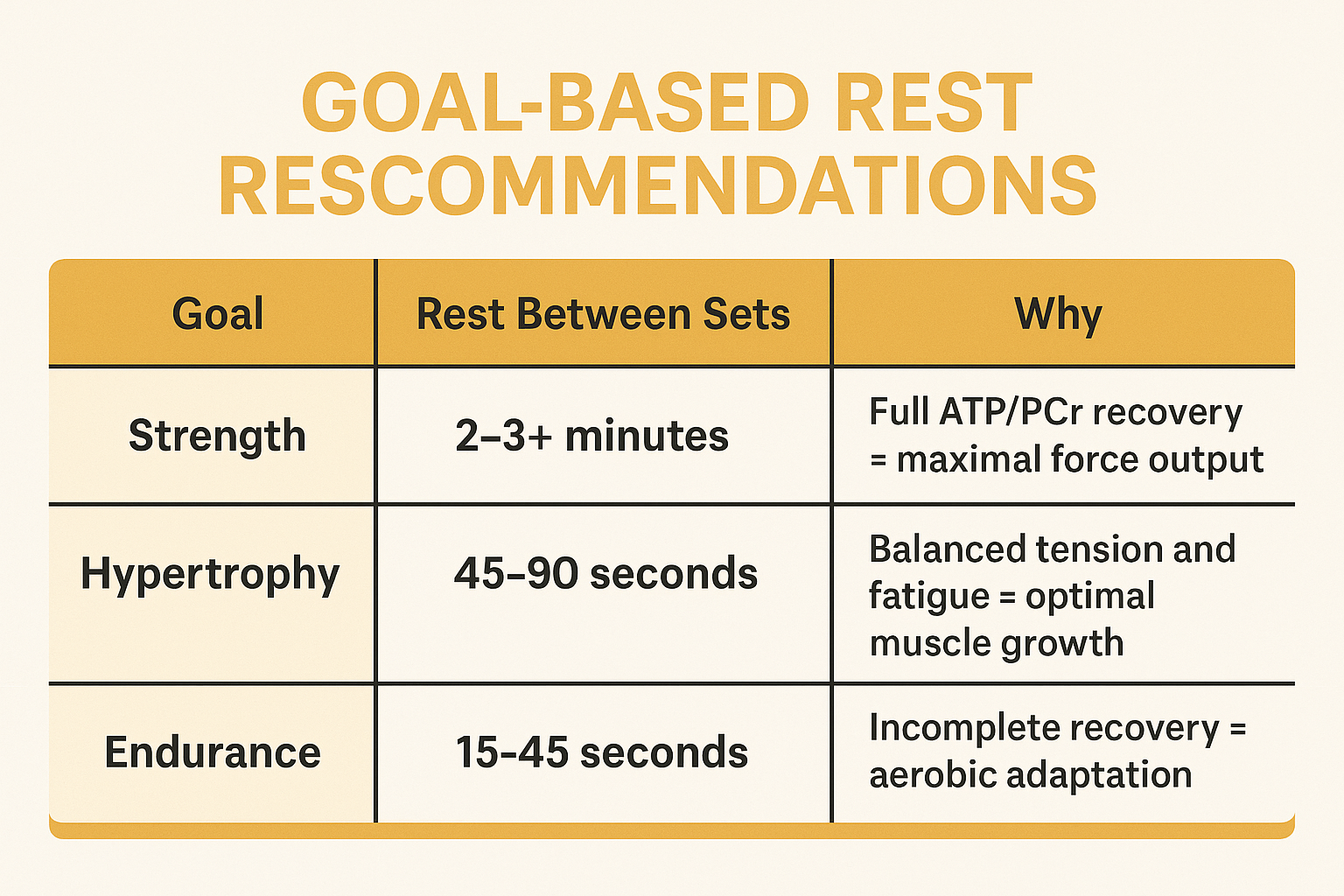Why Resting Between Sets Is Crucial for Your Fitness Gains
Let’s say you crush a tough set of squats, heart pounding, legs shaking—and then immediately jump into your next set thirty seconds later. You’re sweating, you’re moving fast, and it feels like you’re working hard. But is that second set doing anything useful for your strength or muscle growth?
If you’ve been skipping over your rest intervals like they’re optional or for “beginners,” you’re likely leaving results on the table—and wasting time in the gym. Rest is a training variable, not a break. And how long you pause between sets directly impacts how much strength, muscle, or endurance you gain from your workouts.
Let’s break down the science (without boring you to death) and then give you a no-fluff way to apply it to your own training.
What’s Happening During Rest Periods, Anyway?
Every time you lift, sprint, push, or pull, your body taps into stored energy—primarily in the form of adenosine triphosphate (ATP) and phosphocreatine (PCr). These stores deplete quickly during high-intensity efforts, especially in low-rep or heavy strength training.
During your rest period, your body replenishes that fuel.
In a nutshell:
Short rest = incomplete energy recovery
Longer rest = more energy restored = better performance on your next set
If you cut your rest short, especially in strength or hypertrophy training, your performance drops off. That means fewer quality reps, lower force production, and—eventually—stalled progress.
One study from the Journal of Strength and Conditioning Research found that resting three minutes between sets led to significantly greater strength and hypertrophy gains compared to resting just one minute. (Schoenfeld et al., 2016)
In practical terms? That guy sitting on the bench for 2–3 minutes between sets might look like he’s slacking… but he’s probably getting more out of each set than the person doing jump squats between every lift.
But Isn’t Less Rest Better for Fat Loss or Conditioning?
Sometimes. If your primary goal is improving muscular endurance, metabolic conditioning, or general cardio, then yes—shorter rest intervals (30–60 seconds) can be useful. They keep the heart rate elevated and increase fatigue resistance.
But if your goal is to build strength or muscle, the “more sweat = more results” mentality doesn’t hold up.
Here’s how it breaks down:
In other words: less rest = more cardio, not necessarily more muscle.
The Problem with “No Rest” Workouts
If you’re short on time (and who isn’t), it’s tempting to stack supersets, circuits, or AMRAPs back-to-back. These can be effective—but only if your goal aligns with the format.
The issue? Many lifters unintentionally shift from hypertrophy or strength training to conditioning without realizing it. They burn out mid-workout, see diminishing returns on their lifts, and struggle to progress.
Remember: training fatigue is not the same as training stimulus.
You can be drenched in sweat and still miss your goals if the stimulus doesn’t match the adaptation you’re chasing.
“But I Don’t Have Time to Rest 2–3 Minutes Between Sets”
You don’t need to stare at the wall or scroll Instagram during rest breaks. Use that time intentionally:
Track your performance. Note the load, reps, or RIR from the last set.
Set up your next lift. Adjust weights or equipment.
Do mobility work. Try light dynamic stretches or breathwork between big sets.
Also, not every set needs full rest. Rest durations should match the exercise and the goal. For example:
Squats or deadlifts? Take 2–3 minutes.
Dumbbell curls or lateral raises? 30–45 seconds is plenty.
Supersetting antagonist muscles (e.g. chest and back)? You can move faster without compromising recovery.
✅ Your Intra-Workout Rest Implementation Plan
Here’s how to apply all of this in your training, starting today:
Step 1: Know Your Goal
Training for strength? Set a timer for 2–3 min after heavy compound lifts.
Focused on muscle growth? Rest 60–90 seconds for most sets.
Prioritizing conditioning? Keep rest short (15–45 sec), but don’t expect big strength gains.
Step 2: Match Rest to the Movement
Big barbell lifts = longer rest.
Small muscle groups = shorter rest.
Use slightly shorter rest between accessories if you're on a time crunch.
Step 3: Monitor Your Output
If your reps or weight are dropping significantly each set, you're not recovering enough.
If you're finishing every set fresh as a daisy, you might be resting too long for hypertrophy goals.
Bottom Line
Rest isn’t downtime. It’s when your body reloads the resources it needs to grow, adapt, and come back stronger. Training without smart rest is like trying to sprint on a dead phone battery—you won’t get far.
In the M.E.D. Method, we don’t waste time. We train with intent, and that includes knowing when to pause. Your rest is part of the program—and now, it’s part of your progress.

